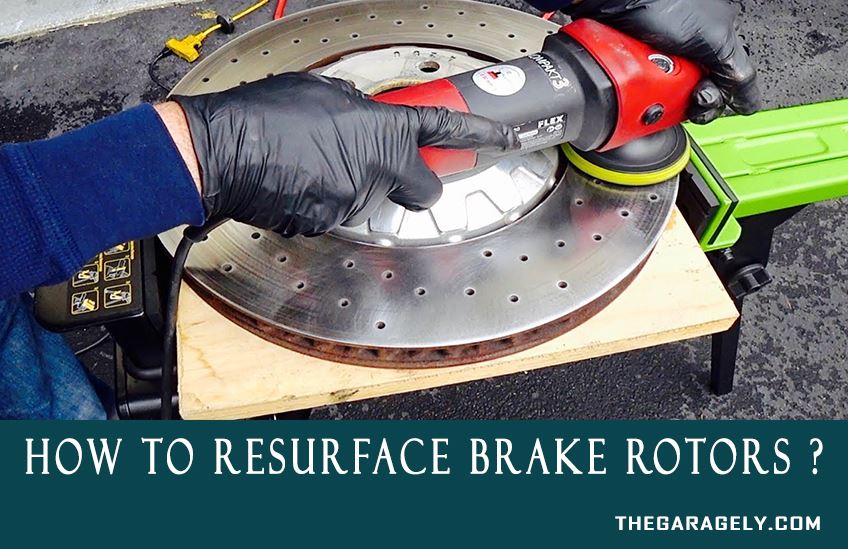
When it comes to safety and slowing down your car, brake rotors, a distinguished part of your brake system, play one of the significant roles while braking. The brake set-up is nothing but a piece of junk if high-functioning rotors are absent in the braking system. A disc-shaped component, brake rotors, turning motion into thermal energy, make your vehicle stop right away. Therefore, brake rotors, installed behind the wheels, ensure security, and brings about the comfortable driving that the drivers look into.
Unlike the brake pads, the brake rotors don’t last for a long time. It is because the rotors are very prone to building up rust, corrosion, and other unwanted materials on their surface over time. In that case, you need to take care of these harmful materials, either replacing or resurfacing the impaired rotors. Going for replacement is the best solution if the surface is corroded with heavy rust and corrosion. On the other hand, if these hostile buildups don’t start to kill the metal, then resurfacing the rotors is more than enough.
Quick Navigation
How To Resurface Brake Rotors
In our article on How to Resurface Brake Rotors, we try our best to come up with the easiest solution to resurfacing your brake rotors. Following our best-flight step-by-step instructions, we believe you can resurface the rusty rotors on your own. So, please, take a look at our following informative blog.
Equipment Required to Resurface the Rotor
- Lug Wrench
- Floor Jack
- Jack Stands
- Screwdrivers
- Clean Rag
- Rubber Mallet (Not Compulsory)
Step By Step Resurfacing Brake Rotors
1. At first, park your vehicle in a safe and solitary place. Now, lift up the vehicle with the help of a floor jack and lower it onto a jack stand at the corner, where you will carry on the process of removing the rotor you are working on. Then, take out the wheels and place them out of your way, using a lug wrench.
2. Now, get a top-notch brake cleaner and spray it on the brake rotors as well as other inner parts visible to you. Leave the parts for a while and wipe them down with a microfiber cloth or rag when dried. Then, figure out the two large caliper nuts that clamp up the caliper to the caliper bracket and remove them using a ratchet and a compatible socket.
3. After that, take the calipers off the rotor sideways. Then, bind the caliper to a suspension component close by with a piece of wire or rope or support it somehow so that it doesn’t inflict damage on the soft brake line. Now look for a caliper bracket if present in your car. But, not all vehicles are designed with a caliper bracket.
4. Now, remove the set screws that hold the rotors in place if available in your vehicle. But like the caliper bracket, most of the cars don’t have set screws holding the rotors. The set screw should be removed with the help of a flat-head or Allen bit. Now, set the rotor free out of the hub using a rubber mallet.
5. Now it is high time to consult with a professional hand or take the removed rotor to a machine shop to have the rotor resurfaced. The process needs expertise and a high-value machine that hardly can be found in your place. The machine can measure whether the worn rotor can be in effect or not.
6. Finally, when the resurfacing is done successfully, reinstall the rotor following the backward process.
Symptoms of a Worn-Out Rotor
There are some symptoms or telltale signs by which you can jump to the conclusion that the rotors installed in your brake system are failing down. Take a look at these signs following.
- Strange Noise
You will notice a weird and scrappy sound in the brake system if the rotor is on wear and tear.
- Noticing Grooves on Its Surface
You can simply check on the existing condition of brake rotors by taking a look at their surface. If the surface of the rotor is groovy, then consider resurfacing or replace the rotors as soon as possible.
- Vibrations
You will be figuring out pulsation in the rotors if they are wearing down. The vibrations will be found around the pedal and the steering wheel in most cases.
- Delay in Rotor’s Operation
The issues mentioned above can reduce the working ability of the rotors. Therefore, your car won’t stop on a dime. So, you can figure out the worn-out rotors if your vehicle takes time while braking.
Brake Rotor Resurfacing Process
Final Words
In the end, we can conclude by saying that the function of brake rotors is irrefutable when you ought to stop your vehicle instantly. Therefore, you have to take good care of the rotors to make them operational as long as possible. Your holy duty is to inspect the rotors regularly and clean off any debris out of the rotors.
As brake rotors are vulnerable to rust and corrosion, you must resurface them before the corrosion starts killing the surface metal of the rotors. Our article on procedures of resurfacing the rotors aims to provide you with the in-detail process of resurfacing. Only you need to read through the lines and perform the resurfacing task accordingly. If you have any queries, post them straightway to our comment section. Our expert team is prepared 24/7 to respond to your questions related to the topics. Thanks a lot for your valuable time! Have a nice day!
Related Post:
What Are the Clips that Come with Brake Pads?
How Many Miles Should Rear Brakes Last?
What to Do Before Getting Car Detailed?
Leave a Reply